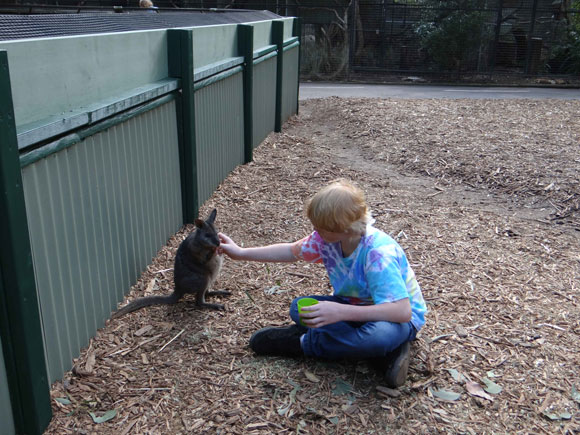Kinship and Me: Connecting with Community and with Environment

Part of the profound wisdom of Indigenous culture is that it recognises the importance of a close relationship between humankind and the natural world. For centuries - millennia, even - Indigenous cultures have lived, worked and worshipped side by side with nature, retaining a deep sense of what it means to be engaged with this soil that we now call Australia.
This importance - the critical nature of a close and respectful relationship with the natural environment - is now understood all over the world. For the last 200 years, the globe's myriad economies have spent time, money and effort on industrialisation; on the construction of vast, hulking edifices of automation and factorisation, of convenience. This still goes on, of course, and the battle is not won, but there is now a new sense of urgency, a sense that something must be done to preserve the sanctity of the planet we all exist on.
We can see the effects of this in a city like Sydney; one of the world's most prosperous metropolises. By November 2016, the combined area of green spaces within the city stood at an impressive 188 hectares, and this figure is growing almost by the month. The already picturesque Sydney is becoming more beautiful, and more pleasant for visitors and residents alike, with each passing year.
This is only part of the environmental battle, of course, but it represents a positive step in the right direction.
Engaging with the Soil Beneath Our Feet
We tend to take our homes for granted. By homes, I don't so much mean our houses and apartments as our physical communities, the natural environment which surrounds the places in which we live.
This is understandable - after all, we see the same landscape everyday, and this is bound to lose its novelty - but we should push against that. Instead, we are challenged to engage with this familiar environment, to love and understand it, and to consider how by so caring we can make a difference, for ourselves, for our families, and for those around us.
Think about art, culture, faith, sense of place and think about how much of this is influenced by the landscape around us. By landscape we include ourselves, as a part of it. This does not extend only to Aboriginal art and culture (although nature certainly plays a big part in Aboriginal thought), but is evident in a wide variety of cultural sources. We can take this as indicative of the important position the natural environment and sense of physical place within the world occupies within the human heart.
So, what has this got to do with kinship? Kinship, as we discussed in last week's blog post, is based upon the Indigenous concepts of family and feelings of togetherness and altruism. It is a concept well worth fostering if we are to truly become a whole part of community and society.
But kinship must be supported. Just as Aboriginal culture in Australia has fostered a symbiotic relationship between humanity and nature for over 60,000 years, we, regardless of our cultural background, can do the same, engaging with the people and the place and being truly present within the community as a whole.
Kinship is the theme of our session this week at Mount Druitt Learning Ground, during which we seek to build stronger bonds between ourselves and the environment, gently fostering robust connections within our society.
We will provide new and meaningful ways to learn much more about kinship in 2018 and hope you will want to join us on the way.
Would you be interested in donating to our organisation, please get in touch with our team and let us begin our journey together.
Margaret Bell, AM - Founder and CEO of Chain Reaction Foundation.
| Website | Donate to our Purple Heart Appeal | Contact Us | Purchase the Book |
